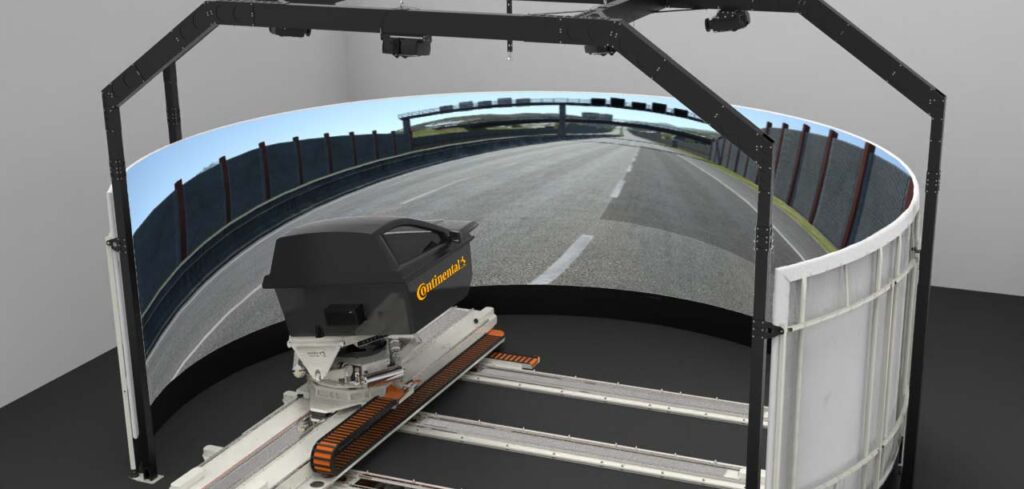 Following the announcement that Continental has invested in Ansible Motion’s latest D3 simulator, Tire Technology International spoke to Holger Lange, head of passenger tire development for Continental’s original equipment business, about what the new equipment means for the manufacturer and how it will shape the company’s tire development processes going forward
Following the announcement that Continental has invested in Ansible Motion’s latest D3 simulator, Tire Technology International spoke to Holger Lange, head of passenger tire development for Continental’s original equipment business, about what the new equipment means for the manufacturer and how it will shape the company’s tire development processes going forward
How do you see virtual tire development evolving?
Virtual tire development in general is gaining momentum. At Continental, we want to actively shape the virtual development process in the automotive industry and in the tire sector as well.
What types of tire performance characteristics and design elements or variables will you be able to test on the D3 simulator?
In principle, we are planning to use the simulator for various road surfaces in all driving scenarios. However, development work is still required, especially for winter surfaces. New tire models, no matter if they are summer, winter or all-season, can be tested predictably in all potential areas of application, driving situations and on a wide variety of surfaces.
Will it be constantly in use on multiple projects, or will it hand over from one project to the next?
The simulator will change over from one project to the next and can be used in parallel for different projects.
Which specific areas of tire testing do you think will be improved following the installation? And will it enable Continental to test certain tire aspects that you’ve been unable to previously?
Virtual tests will help our test drivers focus much better on the actual tire testing, as adaptations they request in future may be realized virtually and hence much quicker. We believe that with the current simulator generation, it has become so realistic to test tires that previous test loops can be replaced.
How does simulation testing complement physical road testing? What sort of lessons can be learned in a simulator versus on the road?
Thanks to its high agility, the simulator can provide Continental’s professional test drivers with subjective driving impressions, just like when testing tires on proving grounds. With the simulator, we present our test drivers with state-of-the-art testing technology. While virtual tire testing will be more efficient, there will always be test loops under real-life conditions to verify virtual results.
Even though a simulation can never correspond 100% to reality, our test drivers arrive at the same evaluation results in our simulator as they do on real roads after a short familiarization period.
Which of the D3 simulator’s capabilities excites you most?
The simulator replaces part of our subjective evaluations on real roads and enables us to evaluate virtual prototypes for various vehicle models more quickly and thus accelerate the development process for our customers worldwide. For example, the development process from one test sequence to the next can be shortened from several months to just a few days.
What sectors of the Continental portfolio do you see being developed using data from this simulator? Will the simulator’s capabilities make it useful for testing models of future/smart/airless tire design concepts?
The simulator will initially test passenger car tires, and due to its capabilities, it will also be useful for testing models of future smart tire concepts for electric and also autonomous vehicles.
Why is Continental investing in new tire simulation equipment?
The investment in a state-of-the-art dynamic driving simulator will enable Continental to develop its premium tires for the original equipment business even more efficiently, sustainably and precisely in line with customer requirements in the future.
What made you select Ansible Motion’s D3 simulator over others that are currently available?
Continental has selected Ansible Motion’s Delta S3, the latest in simulation technology. With an increased motion space of 4 x 5m, higher resolution and the ability to accurately evaluate tires in a virtual world, the Delta S3 will allow Continental’s engineers to simulate accelerations over a longer period of time. This guarantees more realistic experiences, such as lane-change vehicle maneuvers, tight and long-distance cornering, and driving on different surfaces.
For more on Continental and Ansible Motion, go to: Continental deploys Ansible Motion’s latest simulator to increase simulation-driven tire testing | Tire Technology International



